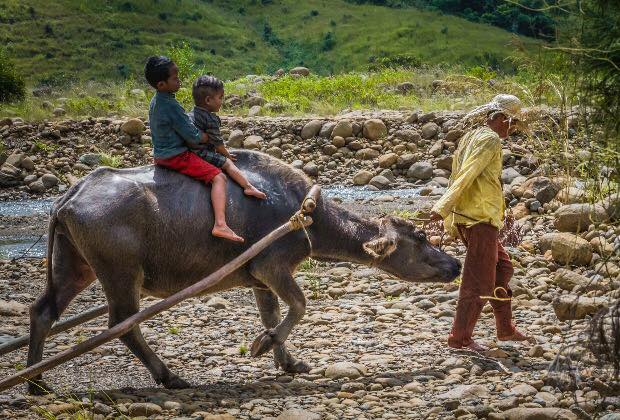By MARIA ANTOINETTE A. MALICSE

CARL JUNG a Swiss psychoanalyst, believed dreams to be the direct and natural expression of the present condition of the dreamer’s internal state. In the QCinema 2017 Circle Competition entry, director Khavn De La Cruz artistically makes use of dreaming as an instrument to highlight a seemingly forgotten, but important part of history which accentuates the sense of nationalism innate in the Filipino people. With film as his chosen medium, Khavn attempts to shed light on the forgotten horrors of the Philippine-American War, specifically on the Balangiga Massacre which claimed the lives of uncountable number of Filipinos—men, women and young children included.
Through Kulas (Justine Samson), an eight-year-old who miraculously managed to escape the carnage at his hometown, Balangiga, with his grandfather, Apoy Buroy (Pio del Rio), Khavn puts the historic event into a perspective that appeals to the heart. To elaborate, the narrative can be split into two kinds of sequences: the reality sequence and the dream sequence.
In the reality sequence of the narrative, the viewers are shown how Kulas matures into a man fit to survive during wartime; this especially becomes more evident when he and his grandfather winds up adopting a boy around a year or two-years-old whom Kulas refers to as “Bola” (Warren Tuaño) and whom he treats like his very own biological brother.
The dream sequence, however, is where Khavn paints for the viewers a dreamscape that will emphasize the true toll the war is inflicting on the young protagonist, Kulas. In contrast to what the viewers are shown during the reality sequence, in his dreams, the viewers are given access to the actual mental condition of the eight-year-old amidst the violence, brutality and death occurring around him. Through his dreams, the viewers are shown that amidst the mature façade Kulas typically puts on during the reality sequence, at the end of the day, he is still a young boy who is traumatized by the aristocracies he has witnessed firsthand, who longs to be with his family again and who still has a blissful child-like innocence in him.
In general, the cinematography is interesting in itself; it is able to effectively convey the juvenile nature of our protagonist and help further emphasize from whose perspective is the narrative being told. On the other hand, the scoring itself can be considered as a masterpiece which tells its own story, but accompanying the visuals, vivify the beautiful imagery Khavn has laid out for his viewers.
Together, the cinematography and scoring, in the point of view of Khavn’s young protagonist, paint a dreamscape which memorably projects truths that while unfortunately most of the time untouched by today’s history classes, has left scars embedded with timeless experiences and valuable lessons which must be recognized and looked back upon for a holistic understanding of the fundamental nature of a Filipino person. F



